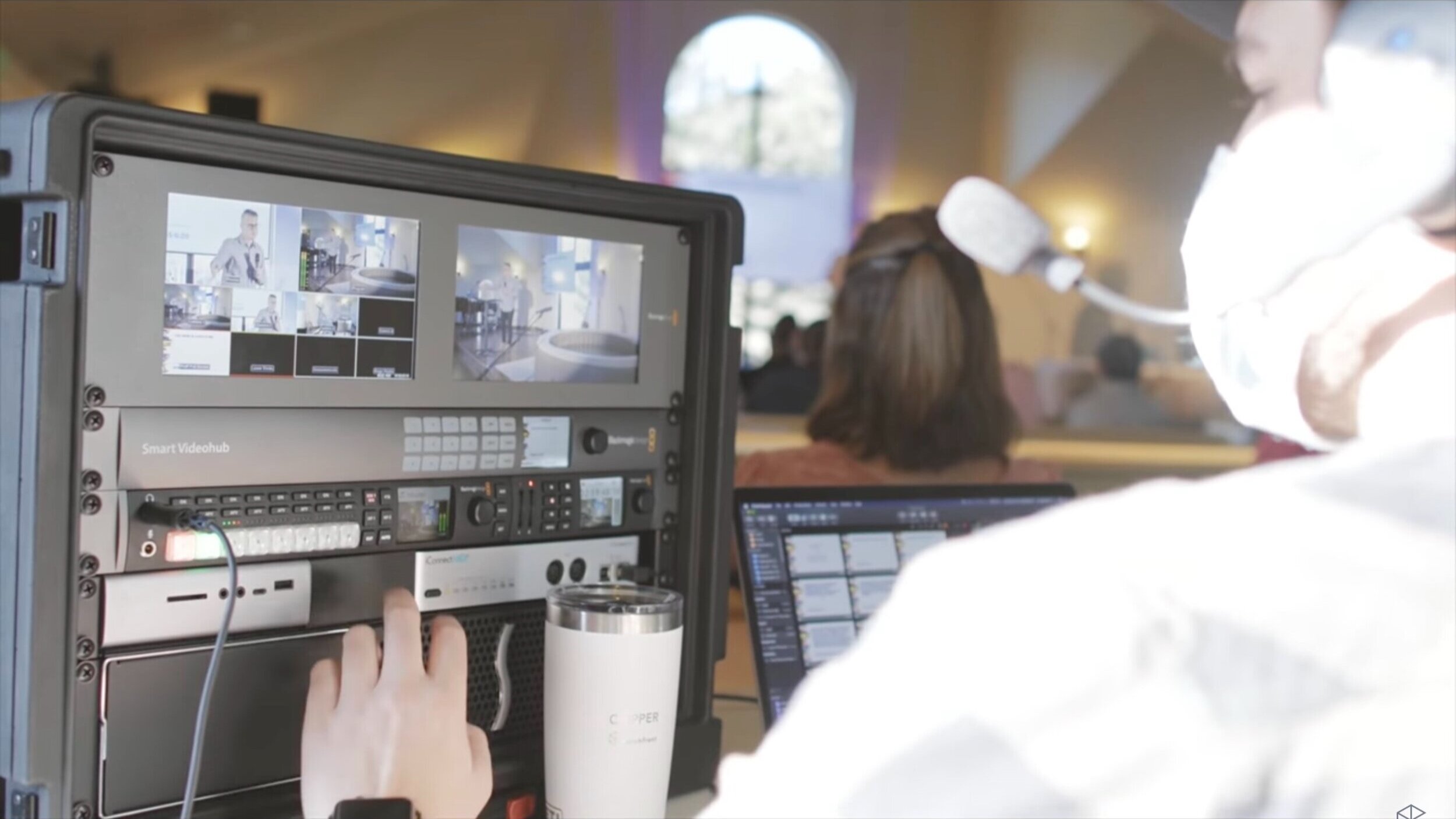What frame rate should churches use to live stream worship?
This is a quick-reference post that will break down Churchfront’s recommendation for live stream frame rates. Desire more thorough instruction for live streaming? Enroll in Churchfront’s Beginner Live Streaming Course.
Unlike those Pinterest recipes that you wish would just cut to the chase and skip all the fluff, let’s jump in.
The answer: Use 24 frames per second (fps) or 30 fps for live streaming.
Why two options, and what is the difference between them? The answer has to do with motion blur.
What is motion blur?
In many cases, amateur videographers look at their camera settings and they think, "higher means better, so I'm going to set my camera frame rate to the highest number at 60 frames per second." The reason you don't want to do this is because of a phenomenon called motion blur.
Stop reading and wave your hand in front of your face. By doing this, notice that your eye actually can’t track your hand. There is a natural “blur” happening. In other words, the eye is not “capturing” fast enough in order to see the hand move with no blur. Controlling the frame rate helps replicate that natural human-eye blur. That’s why 24 fps and 30 fps work best. They mimic the eye. But change the frame rate to 60 fps, and there will be no blur. The image will look unnatural.
So Churchfront, which option should our church use?
We recommend using 24 fps, as it is the cinematic standard, and it especially accentuates the worship music. However, 30 fps can be more pleasing for the preaching portion of a service. 30 fps will look like broadcast TV, while 24 fps will look more like a movie. Both have pros and cons, but both are frame rates that will work well.
What in the world is 23.98 or 29.97 fps?
Don’t worry about this. If these frame rates are the options the camera offers, consider them the same as 24 fps and 30 fps. There are plenty of YouTube videos to explain, but churches don’t need to understand the difference between 23.98 and 24 fps to live stream their services.
What about 60 fps?
Use 60 fps if your church wants to get into applying slow-motion effect into the live stream. For one method on how to apply 60 fps to your church’s live stream, view the video above!
That’s it!
It’s pretty simple. Choose 24 fps or 30 fps, and be sure to keep these settings consistent among all the church’s hardware. Happy streaming!





















